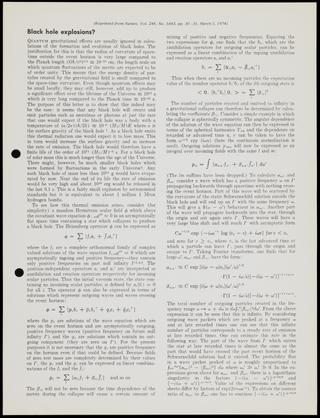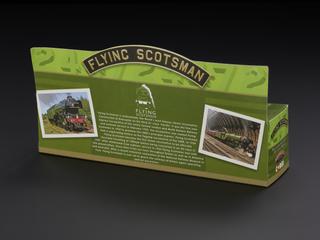
Essay submitted for the Adams Prize by Stephen Hawking, with a geometrical approach to the big bang theory of the universe
- maker:
- Stephen Hawking
























Singularities and the Geometry of Space-Time. Photostatic copy typescript Submission for the Adams Prize, Gonville and Caius College, Cambridge, 13 December 1966. 192 pages, 263 x 205mm. Black cloth binding.
This essay by Hawking, and a similar one written at the same time by Jayant Narkilar, are among of the most significant items from Stephen Hawking's bookcases, illustrating how Hawking had friends among his scientific rivals. Jayant Narkikar was a student and collaborator of Fred Hoyle, proponent of the steady-state theory of the universe. While a PhD student at Cambridge, Hawking was tutored by Narkilar while getting familiarized with the two competing theories of the universe (big bang and steady state). In fact, one of Hawking's first scientific publications was a critical commentary on Hoyle and Narlikar's theories. Stephen Hawking's office contains the essays that they both submitted for the 1966 Adams Prize. In the end, both Hawking and Narlikar received special prizes, even while proposing opposing theories of the universe.
They remained good friends for life.
The main prize that year was given to Roger Penrose, who had crucial influence on Hawking's work, establishing the framework for understanding black hole singularities that was adapted by Hawking for understanding the big bang.
A newly typed version of Hawking's essay is available online at the European Physical Journal H:
DOI: 10.1140/epjh/e2014-50013-6
https://www.epj.org/images/stories/news/2014/10.1140--epjh--e2014-50013-6.pdf
Stephen Hawking's office contained more than 300 books, all located on the bookshelves above the kitchen counter. They date as early as his student years, and the bulk corresponds to his long professional career from the 1960s to the 2010s. From the 1990s onwards Stephen would have used digital versions increasingly, so the books in his bookcases were a select subset. While some items are rare copies -like the dissertations he advised or book drafts- most of the library contents are rather standard prints. The majority contain significant individual marks, and even for those that do not, the connection to Hawking is evident. Books by friends and colleagues often contain inscriptions and inserts that evidence their relationship. Others remind of places he visited, conferences he attended, or relate to having become a celebrity and inspiration throughout the world. Of the books that he authored, there are usually multiple versions, translations, and occasionally draft versions. A good portion of the books also contain inserts such as notes by the authors or editors, receipts, and occasionally unrelated material that found its way into them around the time of their acquisition. A portion of them has also been bookmarked with post-its by Stephen's assistants pointing to the sections most relevant to show visitors.
Details
- Category:
- Stephen Hawking Office
- Collection:
- Stephen Hawking’s Office
- Object Number:
- 2021-561/302
- Materials:
- paper (fibre product)
- Measurements:
-
overall: 271 mm x 215 mm x 23 mm, .96 kg
- type:
- essay, book
- credit:
- Accepted in lieu of Inheritance Tax by H M Government from the Estate of Stephen Hawking and allocated to the Science Museum, 2021




